[Apple II, Softlore Corporation]
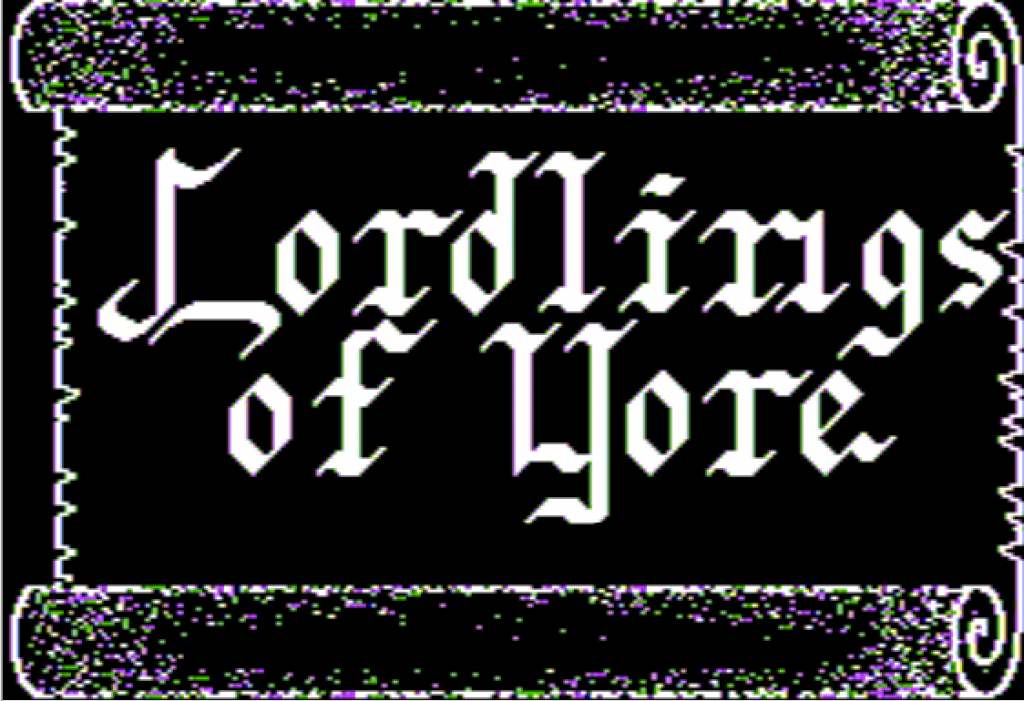
I am Scribe, Lordling of “Scribeshire”. I was content with my situation in life, but I learned that my three neighbours were mean bullies. Imagine that : Lordling Nottingham, Lordling Londondary and Lordling Newcastle, situated respectively to the East, South and South-East of my shire, colluded to take my castle and tax my peasants. I have to do something !
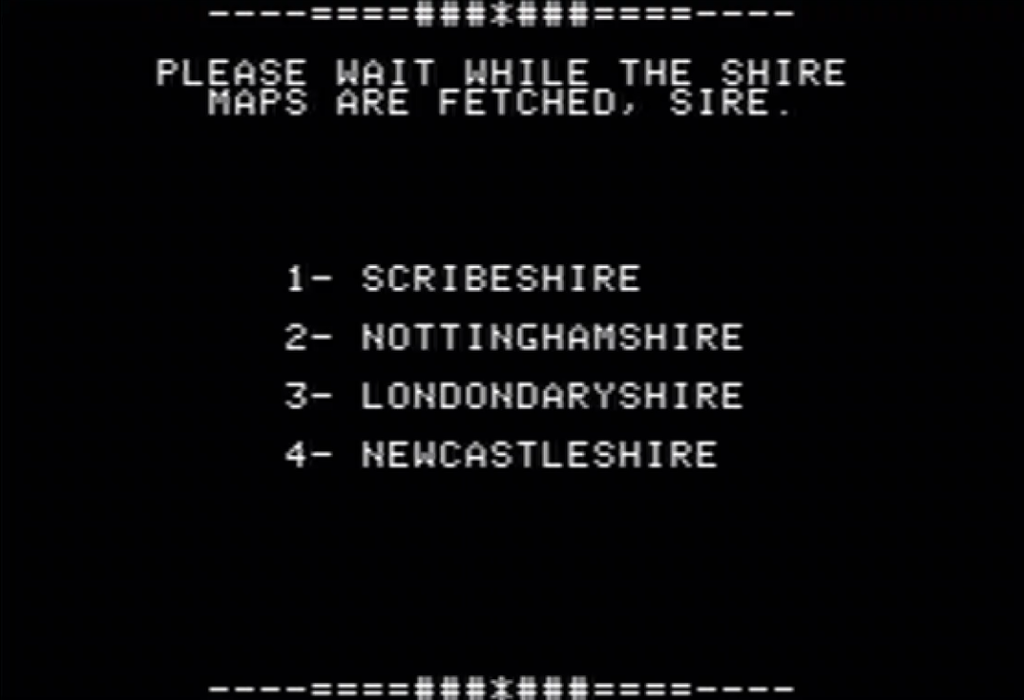
This is my shire. There are many like it but this one is mine :

Just like in any shire, you can find in it a castle (in red) and peasants. Peasants are regrouped by 100 (I), 200 (II), 300 (III) or 400 (the village), and each peasant pays 1 gold piece of tax every day [turn], for a total of 5000 gold pieces. Yes, that’s some intense level of taxation, but that’s because my peasants are very wealthy.
I start with 20 000 gold pieces already, when each of my opponents starts with only 5 000 gold pieces. Their base revenue will also be 5 000 gold pieces every day so 15 000 for the three of them.. This determines my strategy : build a large army and knock out one of my opponents before the end of the first week, then seize his villages and even the odds.
There are several ways to invest my treasure, but I am not going to be very subtle :
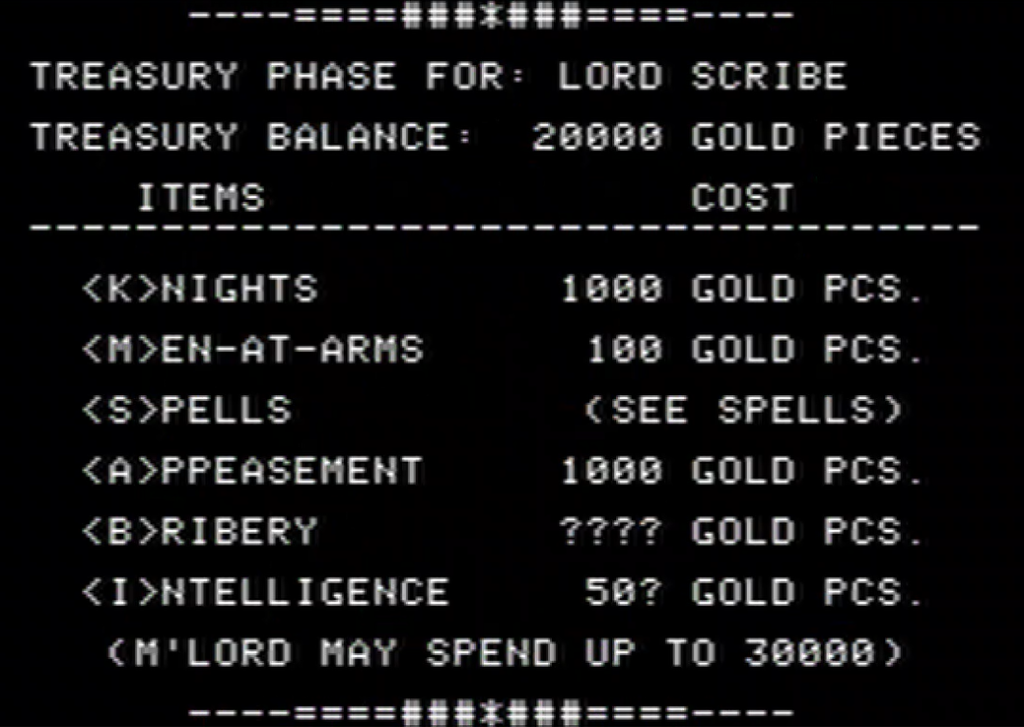
- Knights and men-at-arms are the only combat units in the game, with Knights being exactly 10 times better and 10 times more expensive than men-at-arms so I don’t really see the difference,
- Spells can be prepared for a price and launch the following turn. I am not going to buy any in this campaign, they are insanely expensive,
- Appeasement increases my popularity with the peasants, which gives better random events,
- Bribery is used to transfer gold from one player to another – pointless against AI,
- Intelligence gives information on enemies that are already detected – there are no targets at the moment,
For the moment, the only thing I care about is an army as large as possible, so I buy 15 knights and 100 men-at-arms, adding them to my starting 10 knights and 200 men-at-arms. The rest I spend appeasing the peasants. Once done, I immediately deploy everything I have, including myself and my necromancer, into one army. I only leave the minimum garrison of 100 men behind.
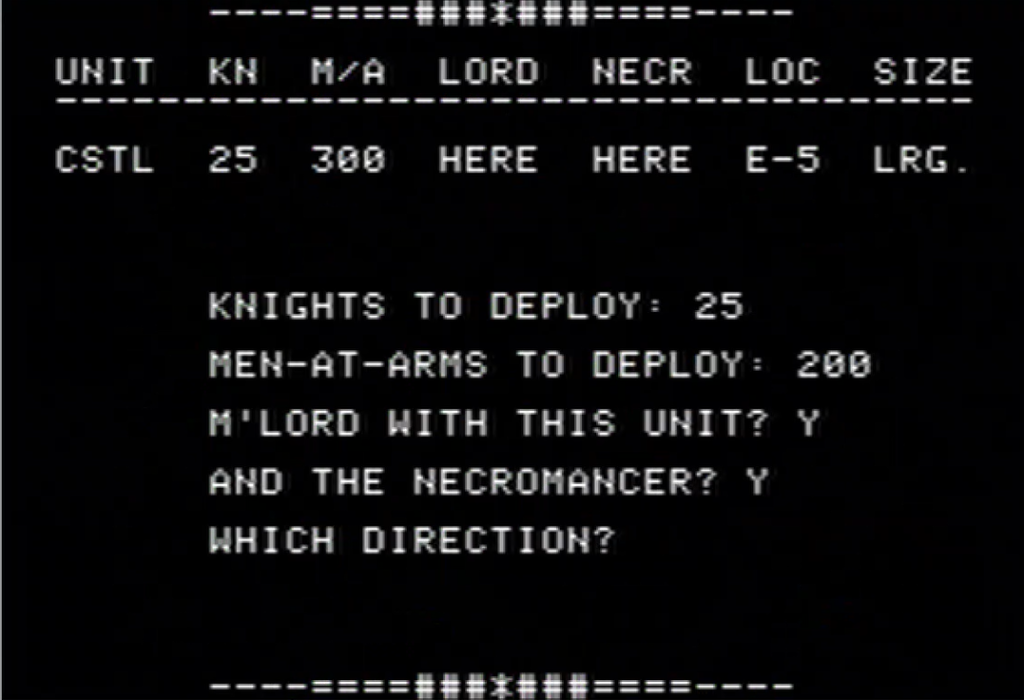
I immediately head South. Meanwhile, my shire is hit by magical storms. I am not sure why my opponents cast such spells (3 000 gold pieces a storm !) but all storms can do is block movements, so not really a problem given their location. I reckon that the AI might not be paying for its spells.
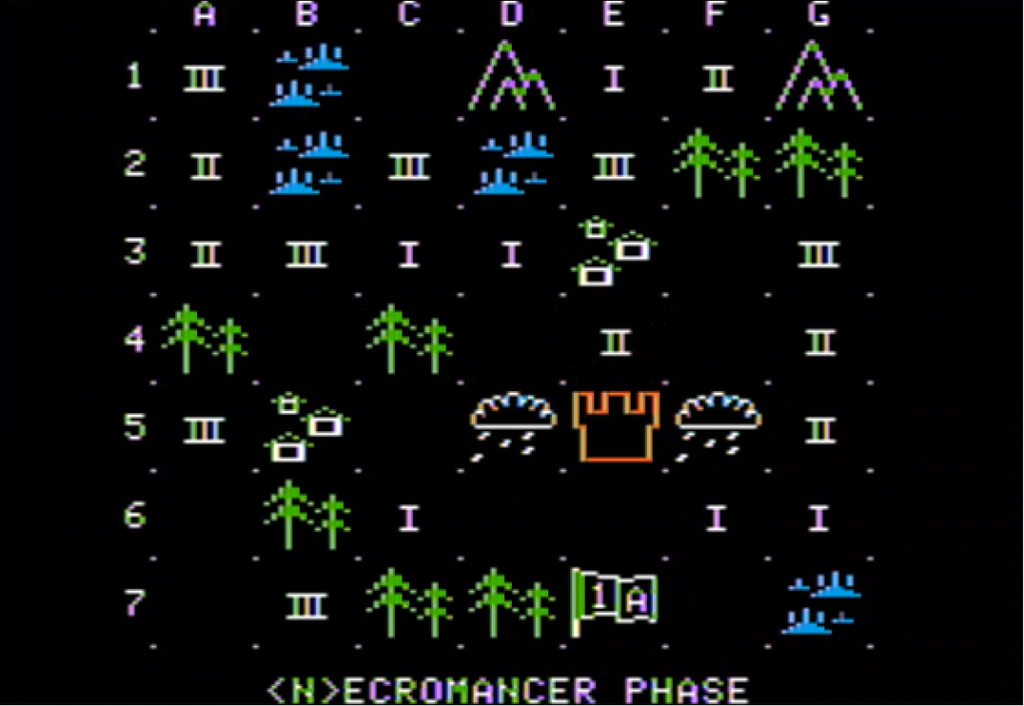
I enter Londondaryshire, and I am immediately faced by two armies of unknown strength.
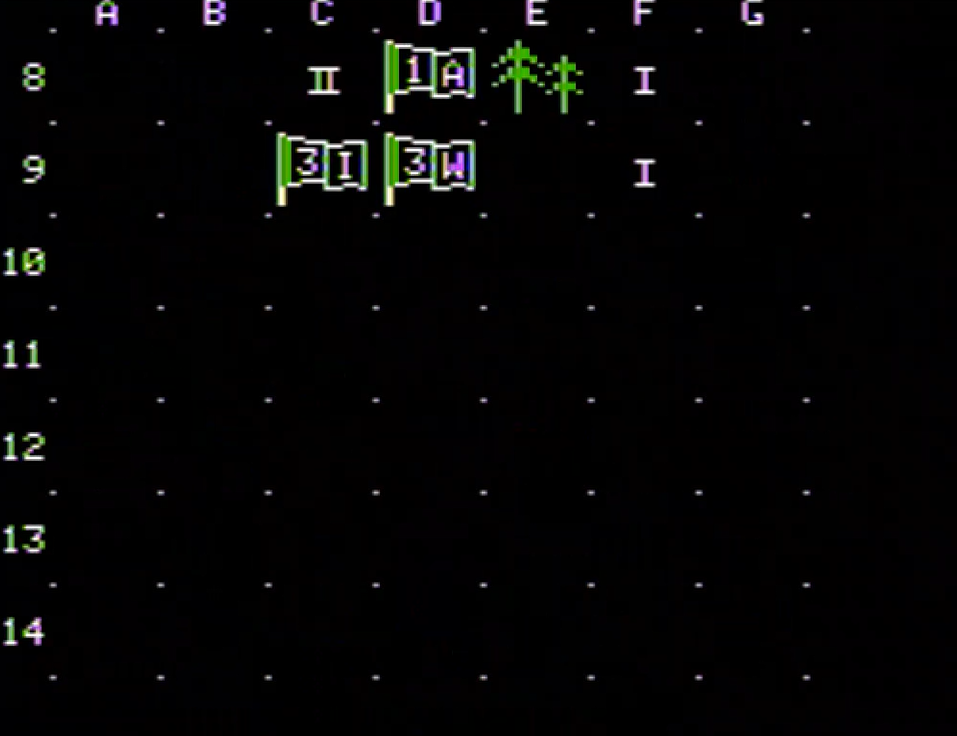
I guess I will never know : I attack 3-W and absolutely crush it.
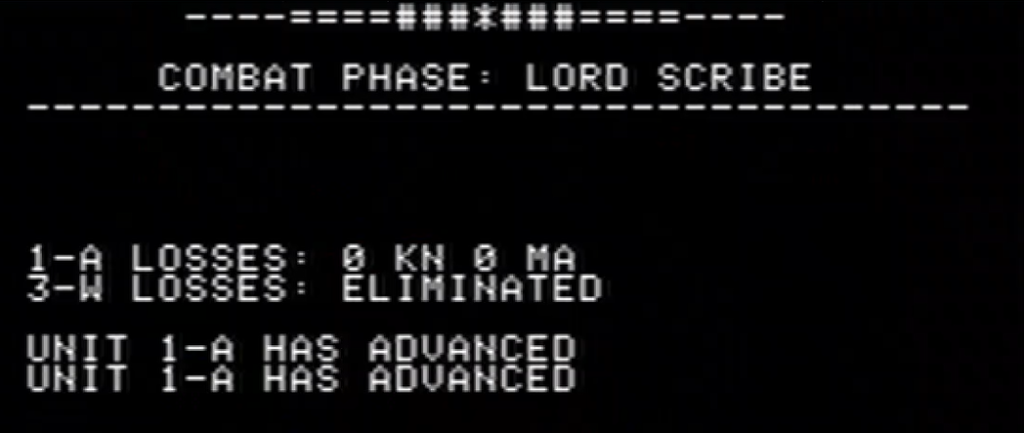
A double advance-after-combat victory puts me in sight of the enemy castle – I actually overshot !
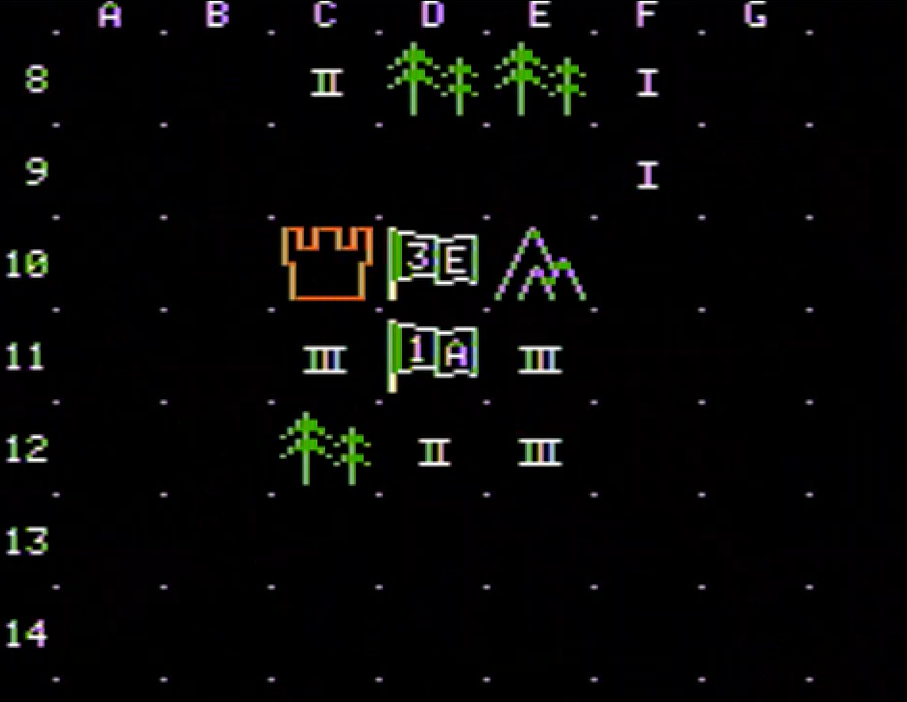
I move West the following day, and then attack Lordling Londondary :
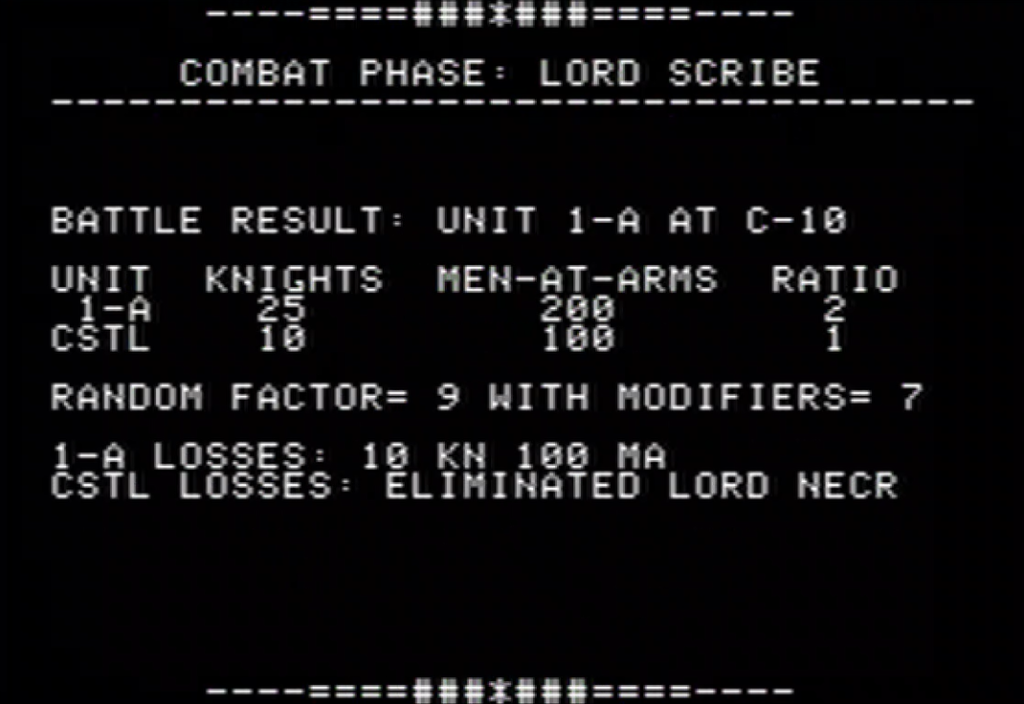
It was costly, but that’s a decisive victory – one opponent gone.
Unfortunately, I don’t immediately gain control of Londondaryshire and its peasants. One can only receive taxes from the peasants of other shires (whether their Lordling is still alive or not) by having armies on the tiles of the villages and – critically – keeping them there.
The good news is that I can detach small forces from my huge army, then detach even smaller forces from that first detachment, and slowly occupy most of the villages in this shire.
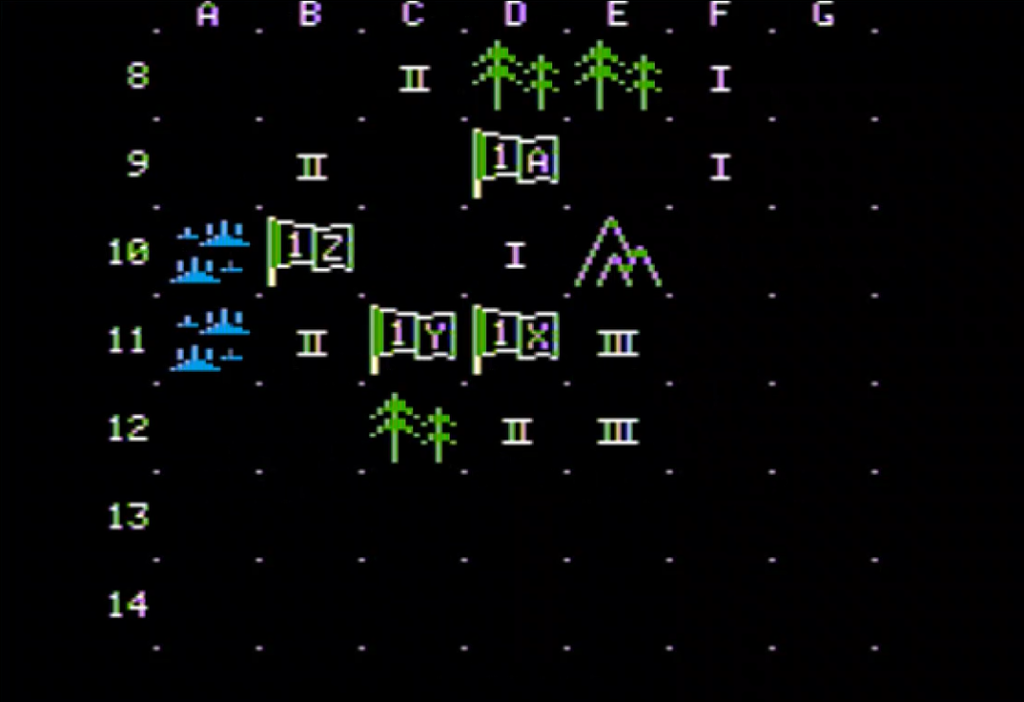
After several days, by splitting my detachment again and again, my revenue increased by 4 000 coins, but not before I chased some armies from Lordling Newcastle from the East of Londondaryshire. Those armies, even smaller than my detachments, were forcing the local peasants to pay taxes to him rather than me !
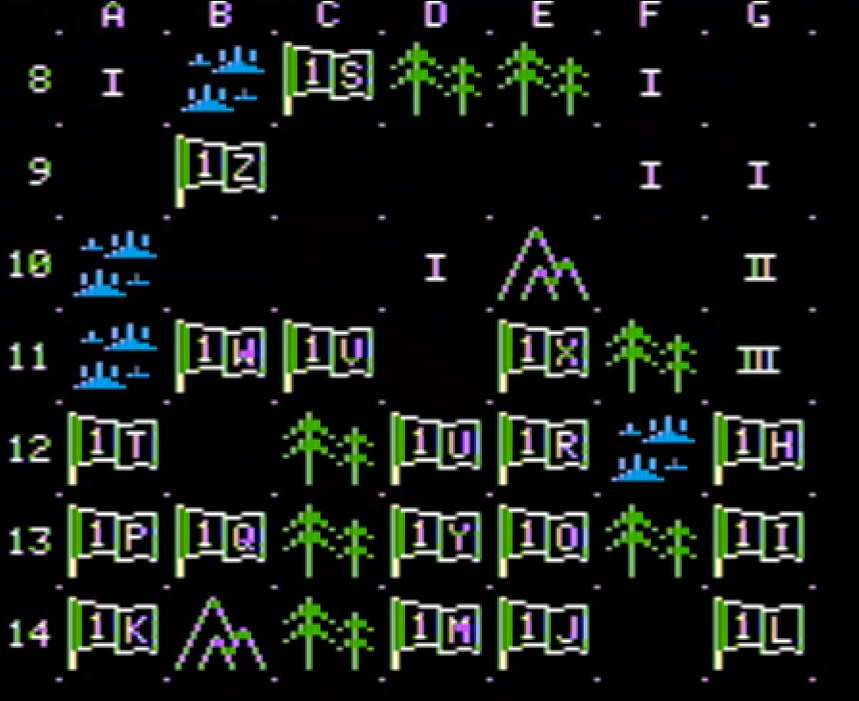
Meanwhile, my own shire is invaded from the East. I have no idea what those armies include (“intelligence” is painful to use due to more UX issues, and unreliable anyway) but I am not worried : my main army is back and it is supported by some new armies. I am also leveraging my necromancer, who casts every turn the only spell both that is both free and useful : fog. Fog halves the fighting power of units in defence. Of course, once I have finished my movement the other lordlings can attack me while I am still standing in the fog, but eh you can’t have everything, can you ?
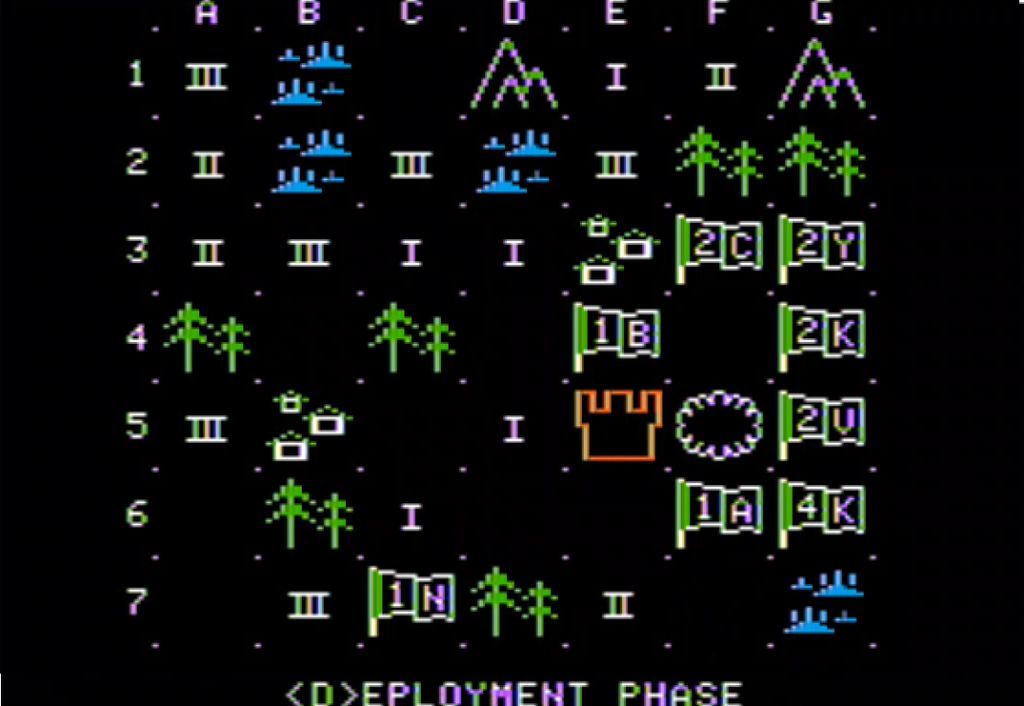
Combat results are extremely variable. Here I attack a significantly weaker enemy unit in the fog, and we have equal losses :
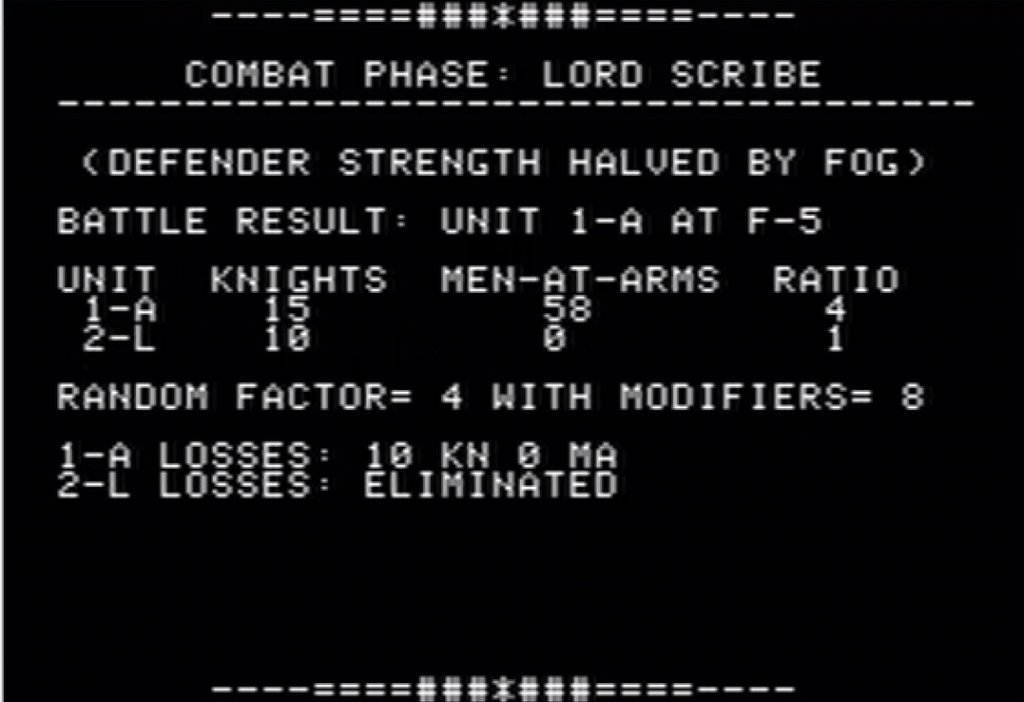
A bit later, I fight another stronger enemy unit in the exact same location without fog, and crush it without any losses :
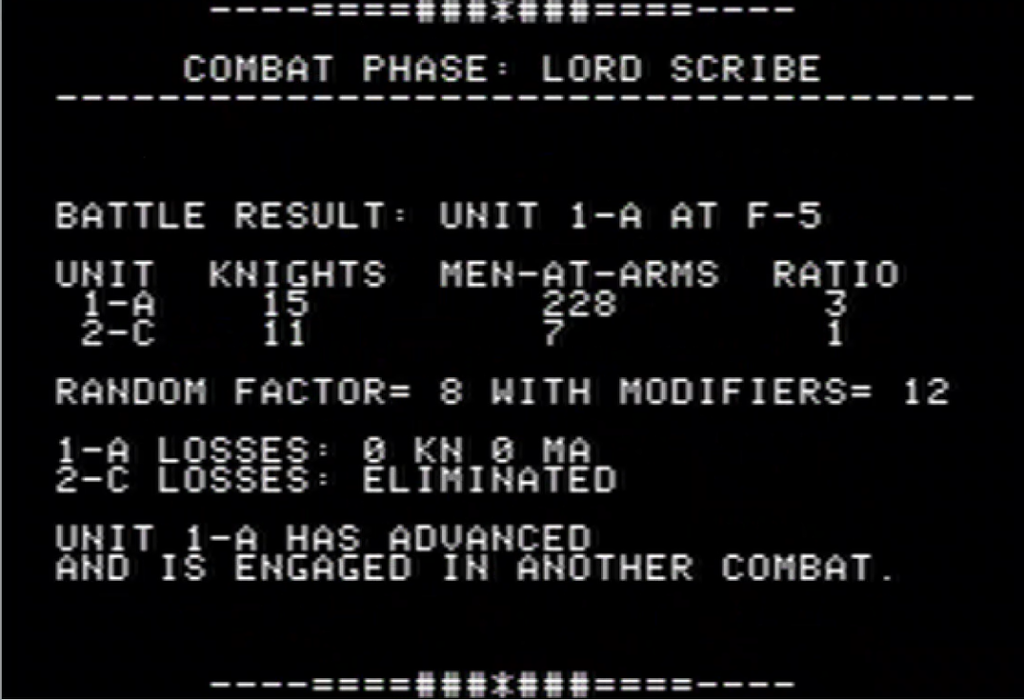
Even better, one of my support armies won this battle against all odds :
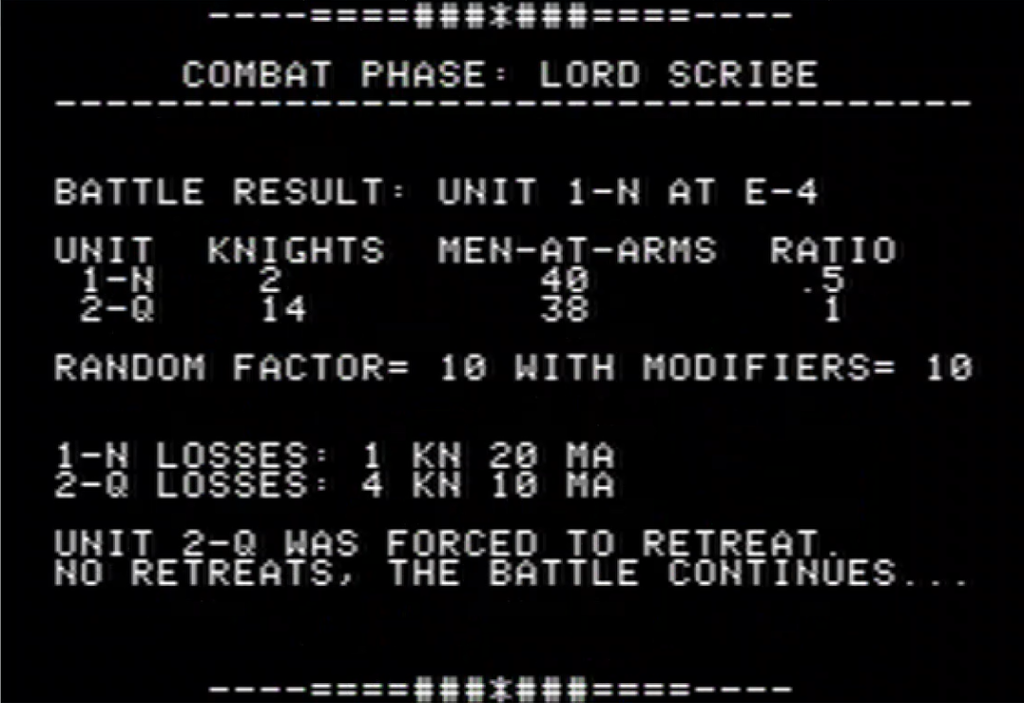
Alas, my support armies keep disappearing during enemy turns. These are not shown, and the only feedback I receive about something interesting happening is this one :
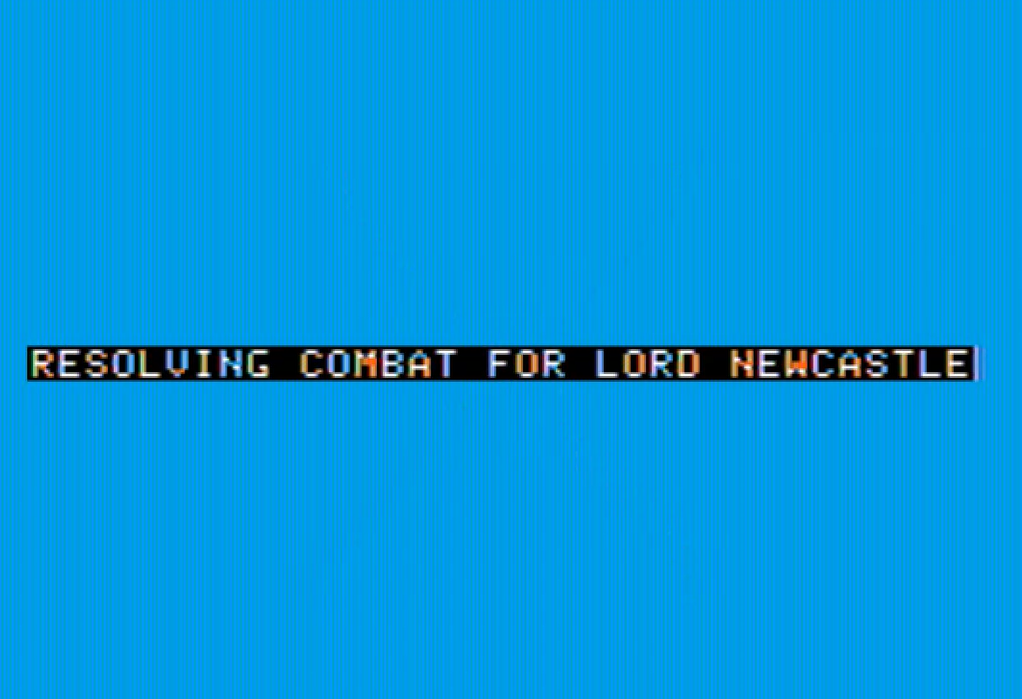
After several days of whack-a-banner where I am slightly positive in terms of net increase of knights/men-at-arms, I decide to send my main army East toward Nottingamshire to end this.
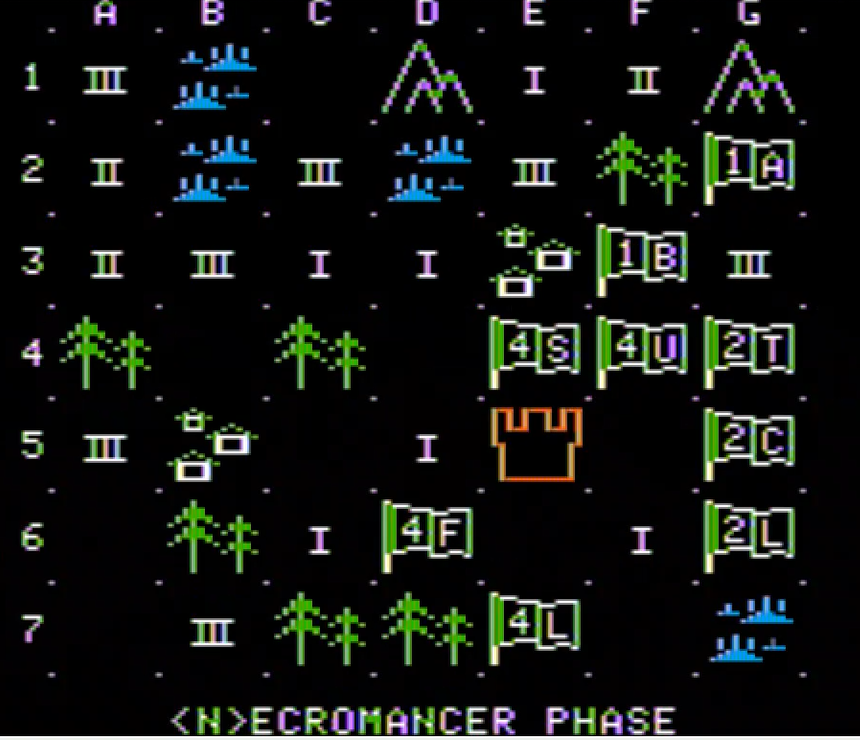
Alas, only a few days after my main army has left the shire, my secondary armies are destroyed during the turn of my enemies, and the men from Lordling Newcastle pour into my villages, cutting a large part of my revenue. Thankfully, no one challenges me in Londondaryshire so I still get some taxes to reinforce my defence.
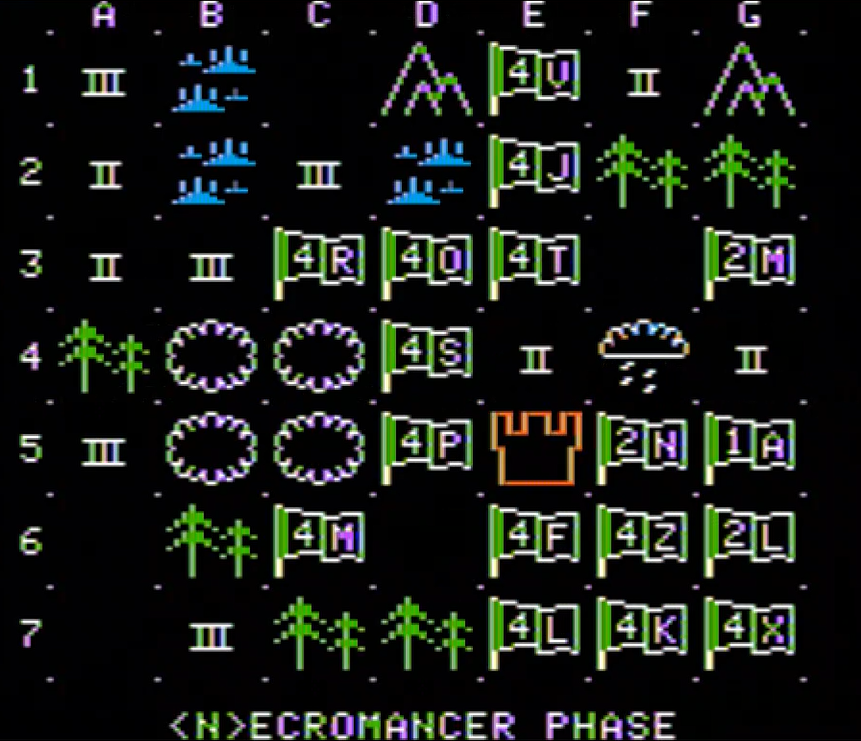
But let’s follow my main army. After some wandering, I finally find the castle of another of my rivals…
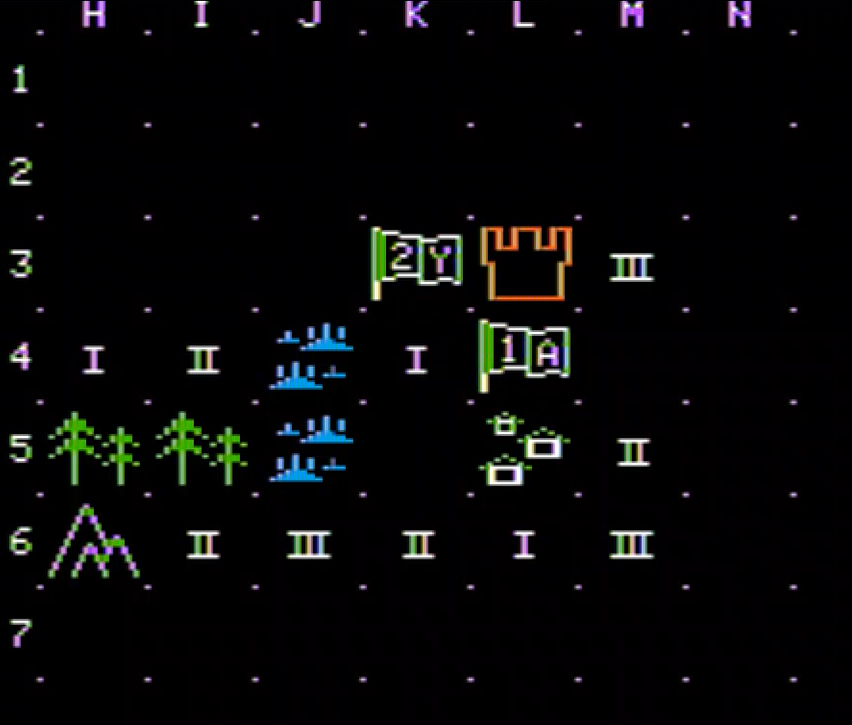
… aaaannnddd I will never know if I had enough forces to take it, because this appears out of the blue immediately after the enemy turn (which, again, I don’t see at all).
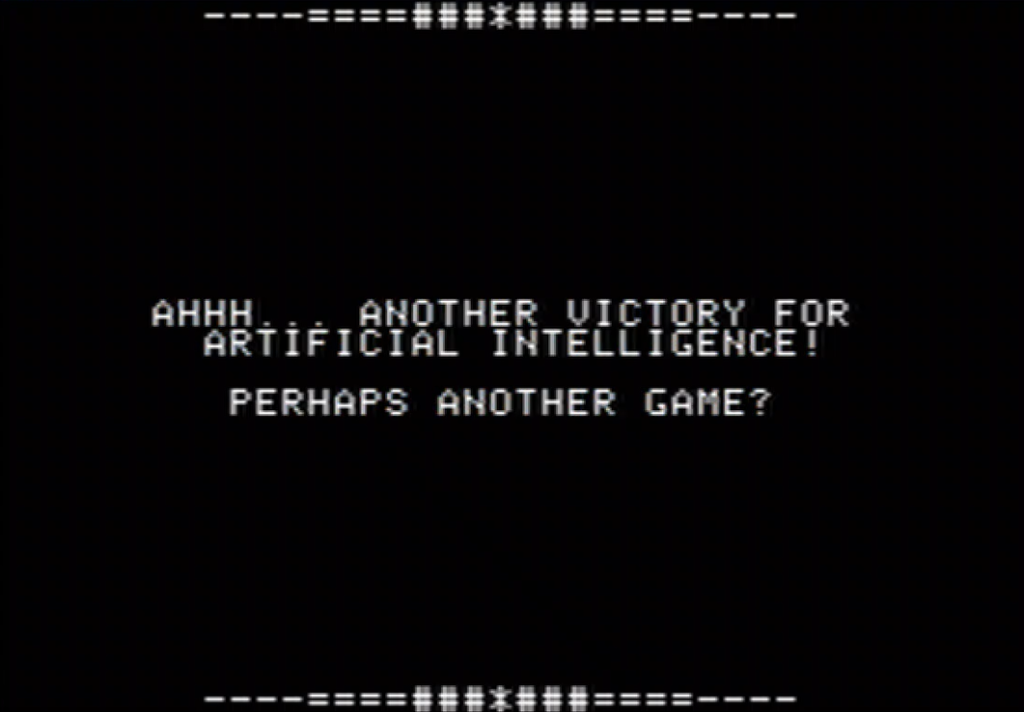
I don’t even know whether I lost because my castle was taken, or because an army sortied from the castle I was about to assault and killed my main army with my Lordling inside. Frustrating, but to be honest perfectly on par with the rest of my Lordlings of Yore experience.
Ratings & Review
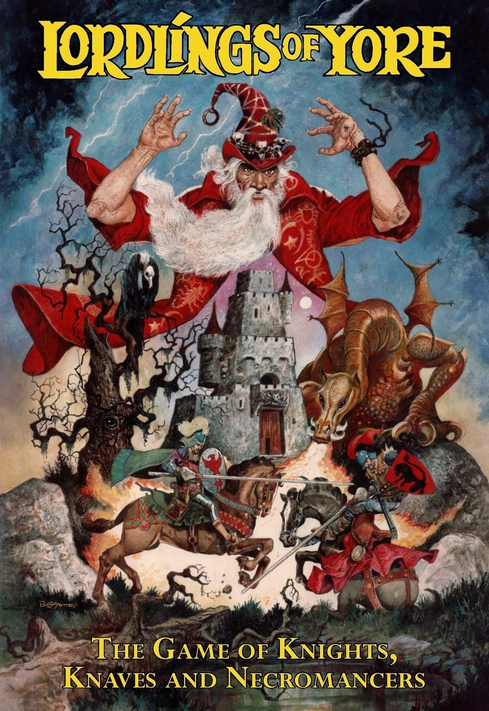
Lordlings of Yore by Jon Baxley and Trey Johnson, published by Softlore Corporation, US
First release : December 1983, according to a report in Softtalk
Average duration of a campaign : 1 hour in solo
Total time played : 4 hours
Complexity: Average (2/5)
Final Rating: Totally obsolete
Ranking at the time of review : 101/107
Well received in an era when poor UX was considered normal, Lordlings of Yore is now frustrating to play because it obfuscates enemy movements and forces you to take notes to play properly. Those crippling issues ruin a game that would otherwise have still been deeply flawed and unbalanced, though certainly ambitious in scope.
Lordlings of Yore, the Game of Knights, Knaves and Necromancers is a mystery to me. None of the 5 people credited (including designer Jon F. Baxley and programmer Trey C. Johnson) are credited in any other known games. According to exactly one source, Softlore Corporation (founded by Baxley) also released at least two other games (Traders of the Torrid Zones and Archyologist) but none of them is documented anywhere, even on Mobygames. And yet, Lordlings‘ footprints appear to indicate a major release, with full-page ads, reviews in far-away France, mentions in at least one German magazine and even a competition announced in Computer Gaming World !
Ernst Krogtoft of the Retro365 blog had the same questions as I did and managed to piece together a few bits of information about the history of the game. According to him, the game was initially released in 1983 in zip-lock bags, and then rereleased in a boxed version by a company called Phoenix Enterprises. I also found out that there was a real “second edition” of the game… in 1996, at least according to the Spring 1996 issue II Alive, the magazine for people still using an Apple II in the 90s. Even better : a third edition was released in 2018. Also, T-shirts.
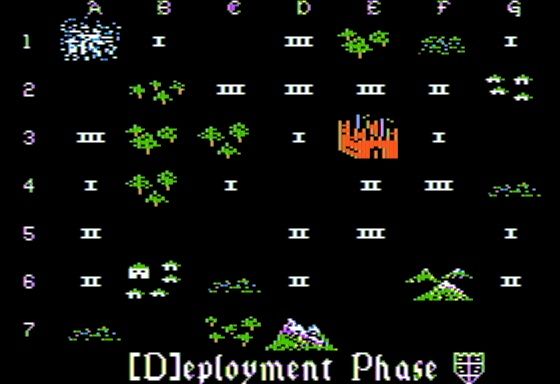
I only found out about the third edition – with a preface adding biographical information – after having completed my AAR. I ordered it and will update this section if I have new intel. Meanwhile, let’s move directly to the ratings !
A. Immersion.
Very poor. Little sets aside Lordlings of Yore from the other fantasy games I have played so far, except maybe the quality of the box art and the pretty cool subtitles (I learned the word “knave“). The game also has “in-context” random events and random taunts from the AI players (“You should take a horse and flee with your treasure”) which adds a modicum of chrome to the game, but that’s not enough.

B. UX, Clarity of rules and outcome.
Terrible. I have played games with terrible UX (Torpedo Fire, Road to Gettysburgh, Computer Ambush) but none of them had such a high ratio of “uneasiness of the UX/complexity of the game“. Just to take the most frustrating features :
- The game does not show you the movement of the AI players, nor the results of their battles against you. It does not even tell you the size of the enemy forces you defeat when those armies are small,
- At the beginning of the turn, you must make decisions on spells, on treasury and on deployment without being able to check what is happening in the other shires or the content of your armies. You can only check these during the movement phase.
- Key pieces of information are hidden the very moment you need them, for instance when you want to cast a spell the game asks you for the coordinates of the target, but in a menu that you cannot exit and that does not display the map. Hope you remembered !
- There is no way to know what is “under” a unit, so hopefully you printed the map (an option actually offered at the end of each turn !) to check whether you are going to attack an enemy in a forest or in the open,
All those issues could have been easily solved with 1983 technology, making me particularly irritated with the game.
C. Systems
Very poor. The game has two features that should have been cool, but turned out to be respectively wasted and detrimental to the game : the necromancer and the villages.
Let’s start with the latter. Unlike most games I have played where you just need to visit the peasants and tell them there is a new lordling in town to collect tax money, in Lordlings of Lore you need to station an army on a village every turn to collect taxes. Alas, because there are so many villages, players (including computer players) will create one bazillion tiny armies to occupy every village and squeeze as much tax money as possible. This creates a dull whack-a-mole gameplay to destroy the armies occupying your villages but, worse, also undermines the rest of the game. Hiding the content of enemy armies can be a good feature when you can buy intelligence (or sight spells), but no one is going to buy intelligence on 15+ hostile armies to find the dangerous ones – especially with this UX and especially when intelligence sometimes fails to yield results. The end result is that players are not going to use intelligence at all and will mostly navigate blindly, not exactly a great design for a strategy game.
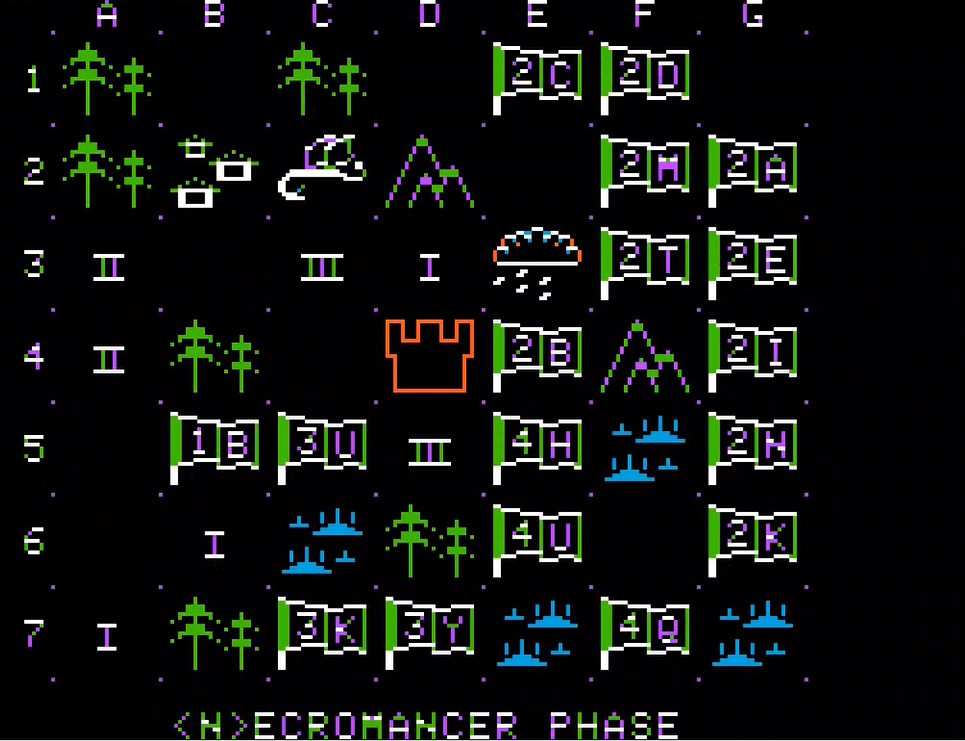
Unlike the “village economy”, the necromancer does not ruin the game, but it feels like it could have been so much better. The player has 10 spells available including 8 that need to be bought every time you want to use them, keeping in mind that the necromancer can either cast a spell or “prepare” a spell, but not both in a given turn.
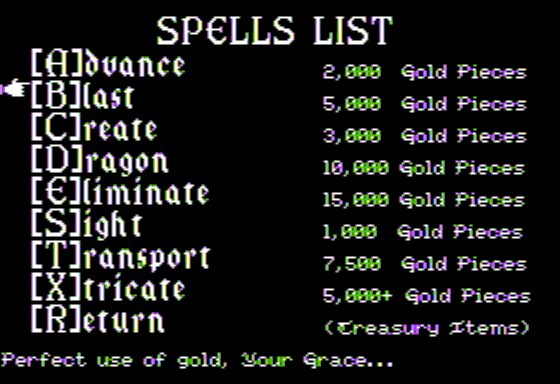
The spells are as follows :
- Advance allows you to move an army by one extra tile as long as you don’t use this movement for an attack,
- Blast can destroy any army that does not include a Lordling or a necromancer…the following turn,
- Storm creates a wall for two turns,
- Dragon creates a very powerful dragon that will move erratically (or not move at all..) for 3 to 7 turns and attack whatever it meets,
- Eliminate destroys a mountain or a dragon right away,
- Sight gives you the size of an enemy army,
- Transport allows the transfer of up to 10 knights from your castle to any army on the map,
- Xtricate allows you to teleport your King from anywhere to your home castle,
- Move is a free spell allowing you to move your necromancer from one place to another,
- Finally, fog is a free spell halving the defence of the units situated in the fog
It looks like a lot of choice, but in practice you will almost only use Fog. With a shire revenue of 5000 gold, Dragon and Eliminate are expensive and ineffective anyway. You will not use Sight either as there are just too many units on the battlefield and you can at best cast it once every other turn. Without intelligence, you will rarely know what unit to Blast – keep in mind that you don’t receive reports for battles happening during your opponents’ turns. Similarly, given you need to cast your spell before seeing the situation in other shires, you will not know when to use the life-saving Extricate and Move.
While I admit that Blast and Transport can find a role in some rare situations, the only 3 flexible spells left are Advance, Create and Fog. But then Fog is free, powerful and does not need to be prepared – you can cast it every turn – so that’s the one you are going to use. In my 4 campaigns, I used Blast once and for the rest only relied on Fog and on the rare spells given to me by random events.
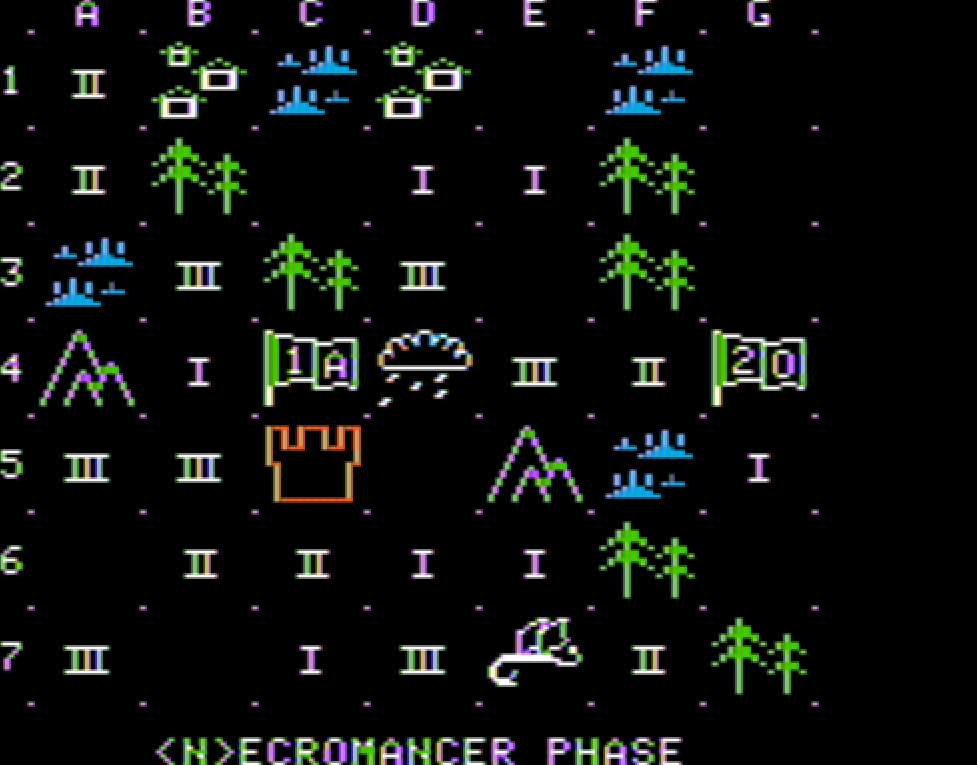
Once you remove spells and intelligence from the list of worthwhile items to buy, you are left with only 3 options : two types of units that have the same efficiency by gold piece and Appeasement which gives you better random events.
D. Scenario design and balancing
Very poor. Your shire is randomly generated (the player can choose whether the shires have more or less of each type of terrain), but your shire is always at the top left, and you are always facing an alliance of 3 AIs. To compensate for the fact that you are one against three, the manual states that you should give yourself the best possible bonus when playing in solitaire, I would have preferred no bonus and seeing the AIs fight one another.
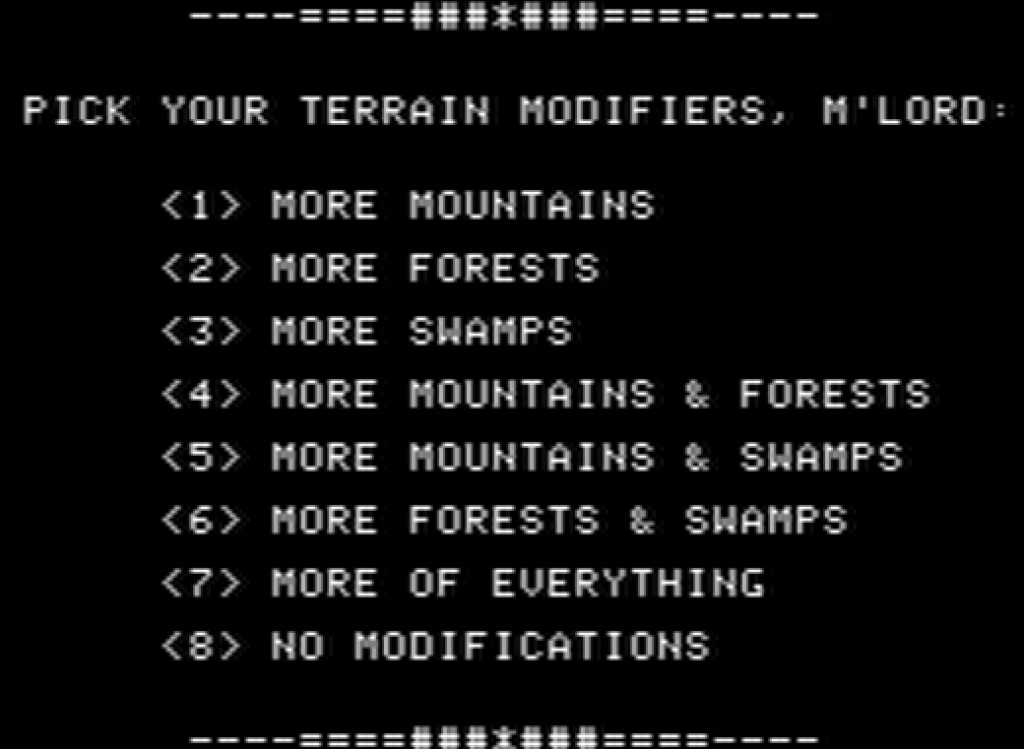
The AIs are very predictable, but at least their strategy is sound : they will occupy your village to strangle you economically and only then attack your castle again and again.
E. Did I make interesting decisions ?
Yes, but sadly almost none at the tactical level (where to move the army, which spells to use) ; all my decisions were about distributing my effort between attack and defence, and when in defence to guesstimate whether I could concentrate into one army or split my forces.
F. Final rating
Totally obsolete. I found out on this blog that old games rot by their UX, and Lordlings of Yore is certainly a victim of this phenomenon, but even with a perfect UX the game has too many design and balancing flaws to be enjoyable. I did not have a good time. The contemporary Parthian Kings, released the same year, is by far a superior experience.
Contemporary Reviews
Lordlings of Yore received generally favourable reviews, with Computer Gaming World (Oct. 1984) reckoning the game while slow is “fresh” and “interesting to play over and over again“. Hardcore Computist (Jan. 1985) calls it “ideally suited to the hardcore strategy gamer”, an opinion also shared by Family Computing in August 1984. The 1985 Book of Apple Software is more mixed, giving it a C+ rating in an article that mentions the many UX issues of the game. Parthian Kings, reviewed immediately after, received a B+.
Lordlings of Yore also managed to reach France, with even more favourable reviews there. Casus Belli called it slow but “quite captivating” particularly in multiplayer in April 1984. The same month Science & Vie Micro stated that the game was “Rich and full of twists“. Much later in October 1985, Jeux & Stratégie rated it 5 stars, calling the game a “must [have]” for amateurs of strategy games. Finally, Tilt (December 1986, when the game was well passed its prime) wrote the only mixed French review, giving Lordlings only 3 stars out of 6 after a laconic mention of “disappointing end games“
It is of course not uncommon for my opinion of a game to be at odds with contemporary reviews, but it has rarely been so radically different : I believe the scope of the game, obviously unimpressive by 2023 standard, was seen as unique in the mid-80s, and it is easy to forgive ambitious games for their shortcomings. In any case, my own review is not at odds with more recent ones, for instance this one from 2013. Still, the game apparently has its fans to this day, so I am really looking forward the annotated third edition to understand what I may have missed. I will report when I receive it.